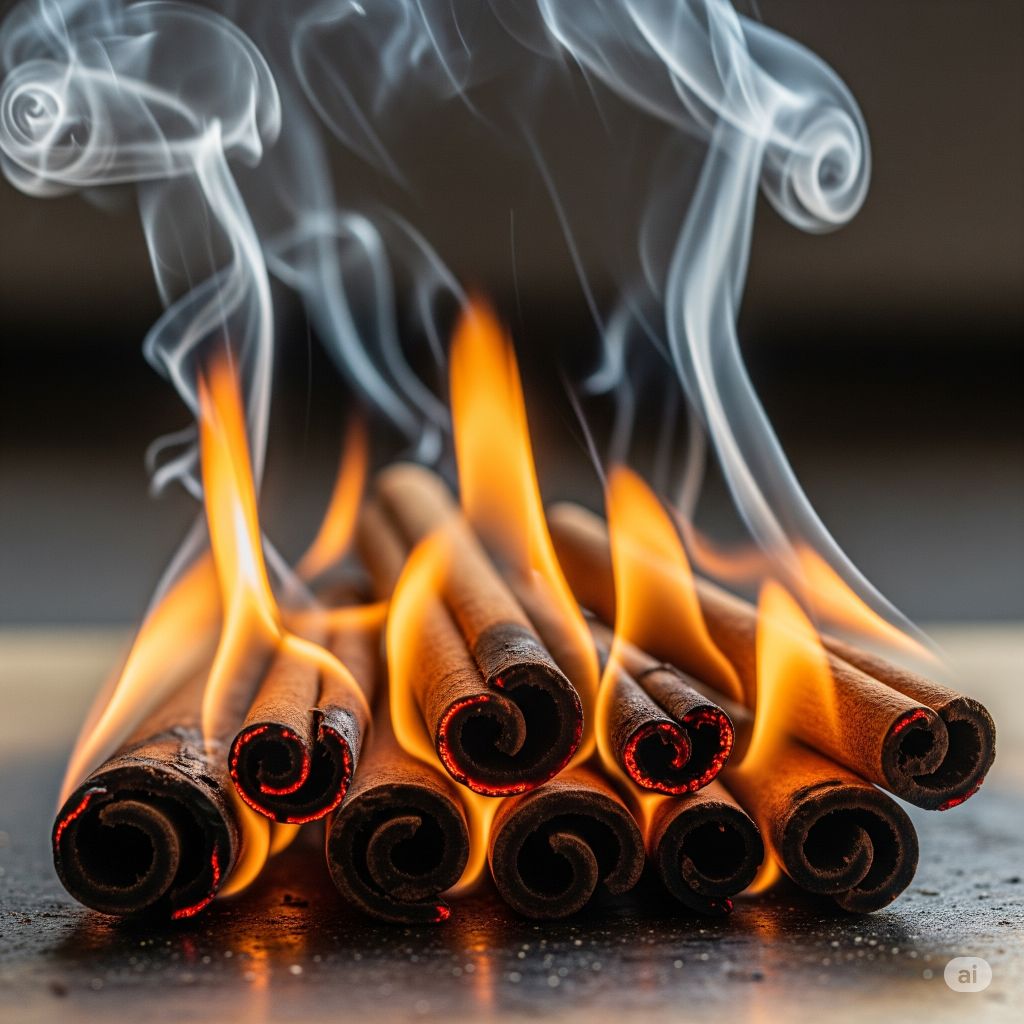
Have you ever wondered if cinnamon is flammable? You might be surprised by the answer. In this article, I’ll delve into the burning question of whether this common kitchen spice can ignite.
Cinnamon’s fragrant aroma and warm flavor make it a staple in many recipes, but its flammability might not be something you’ve considered. Join me as we uncover the truth behind this fiery topic and separate fact from fiction.
Get ready to ignite your curiosity as we explore the surprising properties of cinnamon when it comes to flammability. Let’s uncover the truth together.
Key Takeaways
- Cinnamon is flammable due to its organic compound cinnamaldehyde, which can easily ignite and burn when in powder form.
- Ignition of cinnamon occurs when its fine particles mix with oxygen in the air and are exposed to a heat source, leading to combustion.
- Proper handling and storage of cinnamon are essential to prevent accidental ignition, such as storing it away from heat sources and open flames.
- Cinnamon’s flammability adds versatility beyond cooking, making it a potential fire-starting tool in emergency situations.
- Understanding the science behind cinnamon’s flammability highlights the importance of respecting its burning properties and taking necessary precautions.
Exploring Cinnamon’s Flammability
When it comes to its flammability, cinnamon is indeed an intriguing subject. Many may not realize that this common kitchen spice can actually be flammable. In fact, when cinnamon is in powder form, it has the potential to ignite and burn, thanks to its combustible properties.
What makes cinnamon flammable is its organic composition. Cinnamon contains a compound called cinnamaldehyde, which is responsible for its distinctive flavor and aroma. This compound also contributes to cinnamon’s flammability. When exposed to a flame, the fine particles of cinnamon powder can easily catch fire and burn.
In some cases, cinnamon has been used to create natural fire starters due to its flammable nature. This ability to ignite may come as a surprise to many, considering that cinnamon is primarily known for its culinary uses.
Overall, Exploring Cinnamon’s Flammability sheds light on the various properties of this versatile spice, showcasing its capabilities beyond just flavoring dishes.
Understanding the Science Behind Ignition
When cinnamon powder is dispersed into the air, it can ignite and burn due to its organic compound, cinnamaldehyde. This compound is what gives cinnamon its distinct flavor and aroma, but it’s also what makes it flammable. The fine particles of cinnamon powder can easily catch fire when exposed to a flame.
Ignition is the process of starting combustion, where a substance is heated to its ignition temperature, leading to self-sustained burning. In the case of cinnamon, the cinnamaldehyde in the powder vaporizes and mixes with oxygen in the air. When a heat source is introduced, such as a spark or flame, the mixture can ignite and produce a flame.
The flammability of cinnamon is a result of its chemical composition and the interaction of its molecules with heat and oxygen. Understanding the science behind why cinnamon is flammable highlights the importance of handling this spice with care and respecting its potential to ignite under certain conditions.
Cinnamon’s ability to burn may come as a surprise to many, given its prevalence in baking and cooking. However, this unique property adds to the spice’s versatility, making it not only a beloved ingredient in the kitchen but also a potential tool for fire starting in emergency situations.
Myth Busting: Is Cinnamon Truly Flammable?
Exploring the flammability of cinnamon might make you question its safety in the kitchen. Contrary to common belief, cinnamon is indeed flammable. The organic compound cinnamaldehyde found in cinnamon is the key player here. When cinnamon powder is dispersed into the air, its fine particles can easily catch fire on contact with a flame. This process happens because cinnamaldehyde vaporizes and mixes with oxygen, leading to combustion when exposed to a heat source.
You might wonder, is this a hazardous characteristic of cinnamon? While it’s true that cinnamon has the potential to ignite, it’s essential to understand that proper handling and storage are crucial. By following safety guidelines and using cinnamon responsibly, the risk of accidental ignition can be significantly reduced.
In emergencies, knowing that cinnamon can be used as a fire-starting tool might come as a surprise. Its flammability adds another dimension to this beloved spice, showcasing its versatility beyond the realm of cooking. Despite its common culinary use, cinnamon’s ability to burn can be advantageous in specific situations where fire starting is needed. This unique property makes cinnamon a valuable item to have in emergency preparedness kits.
Precautions When Working with Cinnamon
When handling cinnamon, it’s crucial to take precautions due to its flammability. Here are some important safety measures to keep in mind:
- Store cinnamon away from heat sources and open flames to prevent accidental ignition.
- Avoid grinding cinnamon in areas with potential sparks or ignition sources.
- Use cinnamon in well-ventilated spaces to reduce the concentration of cinnamaldehyde in the air.
- Keep containers of cinnamon sealed when not in use to minimize exposure to air.
- Dispose of old or expired cinnamon properly to prevent any risky situations.
By following these precautions, you can safely enjoy the versatility of cinnamon without risking fire hazards.
Ignite Your Curiosity: Practical Experiments with Cinnamon
Curious about how cinnamon reacts to heat? Cinnamon is flammable, making it an intriguing ingredient to experiment with. Here are some practical and safe ways to explore its flammability:
- Cinnamon Test: Sprinkle a small amount of ground cinnamon onto a non-flammable surface. Use a safe heat source, like a candle, to carefully ignite the cinnamon and observe how it burns. Remember to have water or a fire extinguisher nearby for safety.
- Cinnamon Stick Demo: Try lighting a cinnamon stick on fire to see how it burns. The oils in the stick will cause it to burn slowly with a fragrant aroma.
- Cinnamon Fire Starter: Mix ground cinnamon with wax to create homemade fire starters for camping or bonfires. The flammability of cinnamon makes it a useful ingredient for this purpose.
Experimenting with cinnamon’s flammability can be both educational and fun, but always prioritize safety when conducting these tests.
Conclusion
Exploring cinnamon’s flammability through simple experiments can be both educational and entertaining. From igniting ground cinnamon to observing the slow burn of a cinnamon stick, there are various ways to discover its reactions to heat. Additionally, mixing ground cinnamon with wax to create homemade fire starters adds a practical element to the experimentation process. Remember, safety should always be a priority when conducting these tests. Enjoy the journey of uncovering the intriguing properties of cinnamon while staying cautious and informed.
